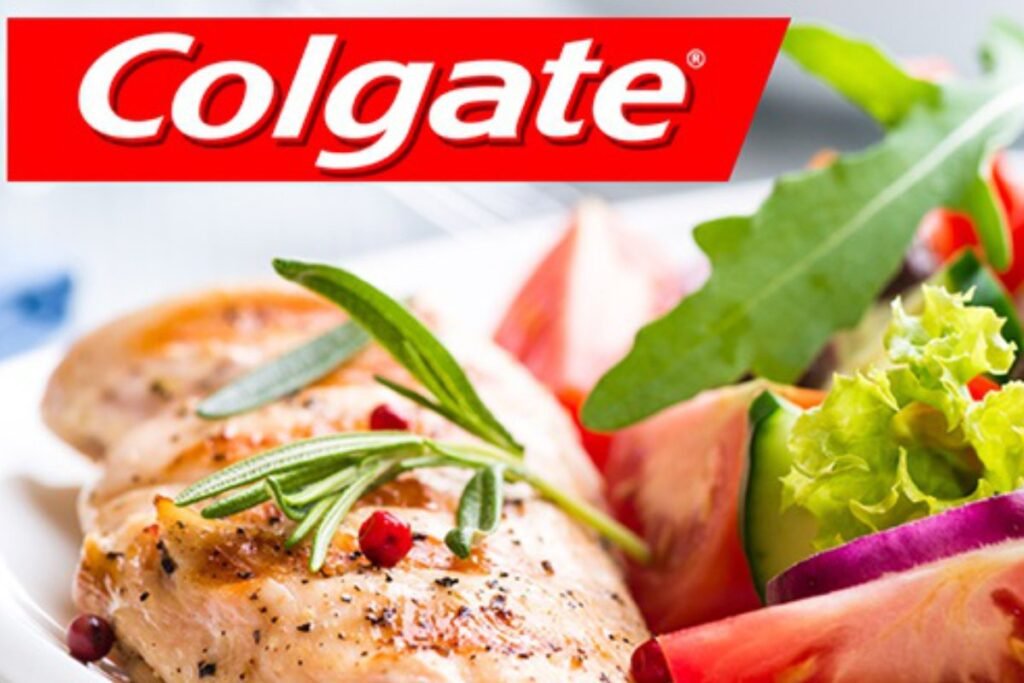(Source-Museum-of-Failures-Collection)
Whenever you hear the brand name – Colgate, a range of flavored toothpaste or mouthwash pops into your mind, especially the mint-flavored toothpaste. Now can you imagine the same brand name associated with the food industry? Yeah, that sounds disgusting, right? Yet, Colgate did venture into the frozen food industry from the early 1960s to the 1980s. Or did it?
The skepticism behind whether Colgate Kitchen Entrees remains to this date, some articles claim it did, and some question it but the major debate is over Colgate’s Beef Lasagna that ‘Museum of Failures’ showcased in 2017. In this article, we’ll learn more about the brand diversion and why it failed.
Colgate-Palmolive
The brand Colgate was founded by William Colgate, an English immigrant on the Dutch street of New York City. He was a soap and candle maker, who started selling his products under the name William Colgate & Company. After William Colgate died in 1857, his son Samuel Colgate took over the company and it was renamed Colgate & Company. In 1928, Palmolive acquired Colgate, forming the Colgate-Palmolive-Peet Company.
In recent years, Colgate-Palmolive has focused on oral care, personal care, home care, and pet nutrition products. It has introduced innovations such as the first-of-its-kind recyclable toothpaste tube and the acquisition of the premium skincare brand Filorga. Colgate-Palmolive has been recognized as one of the world’s most ethical companies and is committed to sustainability and corporate responsibility. Today, Colgate-Palmolive is a global leader in the consumer goods industry, with a presence in over 200 countries and territories worldwide.
“Sometimes, even the best brands need to learn that success in one industry doesn’t guarantee triumph in another.”
Colgate Kitchen Entrees by Colgate is one of the examples that follows this quote. While the brand never clarified about diverging into the frozen food industry, it is said that In the 1980s, Colgate tried to enter the frozen food market in the US. They launched a range of frozen dinners, including an Italian classic. However, the product failed and Colgate never mentioned it again. When the Museum of Failure opened in Helsingborg, Sweden, in 2017, news outlets picked up on this failed product and featured it in their articles.
The product was called “Colgate Lasagna” and was illustrated with a picture of a yellow box and Colgate’s logo. However, the lasagna may not have actually existed in the first place. Colgate denies the existence of their 1980s line of microwavable cuisine, including the lasagna. The Museum of Failures features a replica of the box, but Colgate does not acknowledge the product.
There is a big skepticism about whether the Colgate Lasagna was real or fake as the box in the museum is a mock-up meant to illustrate a wider product range, and it was the only ‘fake’ thing in that museum. Most articles mention this fact, but they often overlook the possibility that the reason behind it could be that Colgate never actually made the product. They usually suggest that Colgate was too embarrassed to participate.
But, It seems that people were right to have doubts about the existence of “Colgate Lasagne.” According to Google Trends, searches for this term only started after the Museum of Failure introduced the concept in 2017. While Colgate Kitchen Entrees is mentioned in Matt Haig’s book from 2003, there is no reference to a lasagne, and there is no mention of it being launched in 1982 as some articles suggest.
Was There Colgate Kitchen Entrees And What Was Included In It?

Many researchers suggest that Colgate Kitchen Entrees did exist, but it was much earlier than 1982. In the 1960s, Colgate-Palmolive faced tough competition from Proctor & Gamble and wanted to expand into other areas. A magazine profile from 1966 mentioned that George Henry Lesch became the new chairman and president of the company in 1961 and his main task was to oversee this expansion.
The profile mentioned that a line of dried chicken and crabmeat entrees under the Colgate Kitchen label was introduced but quickly withdrawn. They also mentioned another product called Snapples, which was an apple chip that was tested on and off for two years. The chicken and crabmeat entrees were specifically mentioned in a weekly digest from the American Institute of Food Distribution in 1966. They claimed that these products were test-marketed in 1964, but only in Madison, Wisconsin, and were withdrawn a year later.
In summary, Colgate Kitchen Entrees included, dried chicken, crabmeat, and Snapples but not beef lasagna, which was claimed to be launched in 1982.
Why Did Colgate Kitchen Entrees Fail?

Colgate is a brand associated with oral health. When people think of Colgate, they immediately associate it with toothpaste. it takes time for a brand to become recognizable among its customers. Unfortunately, Colgate didn’t invest enough time in building that recognition, so customers were not prepared for their expansion into other products.
There was already tough competition from big companies, and Colgate wasn’t prepared to compete on such a large scale. As a result, Colgate struggled to convince their customers to associate them with food entrees instead of just toothpaste. This change in perception affected customers’ mindsets and goals.
They made the mistake of continuing with the same brand name instead of creating a sub-brand that people can associate with when it comes to the frozen food industry. They also failed to create awareness about their frozen meals among consumers. The customers who did try Colgate’s frozen meals were left unsatisfied with their taste and quality.
Marketing Takeaway
Colgate failed to recognize that consumers associated their brand with dental hygiene, not food. This lack of understanding led to a disconnect between the product and its intended consumers. Before launching a new product, it is essential to conduct thorough market research and ensure that there is a genuine need and desire for your offering among your target audience.
The brand failed to effectively communicate the unique selling points of its frozen food line. Consumers were left confused about why they should choose Colgate for their meals when there were already established players in the market. It’s important to explain why your new product is special and how it can benefit people. This helps you stand out from your competition and get people interested in what you’re offering.
Despite the debate over Colgate’s Beef Lasagna in 1982, its Kitchen Entrees was launched in 1964 and was a huge fail. Colgate is a big brand but failed to realize that venturing into a new industry might not result in success as they are known for their oral healthcare products. Other brands can learn from their mistake and if they want to diverge, they need to make sure that their customers can associate with their new products and do the proper marketing.






